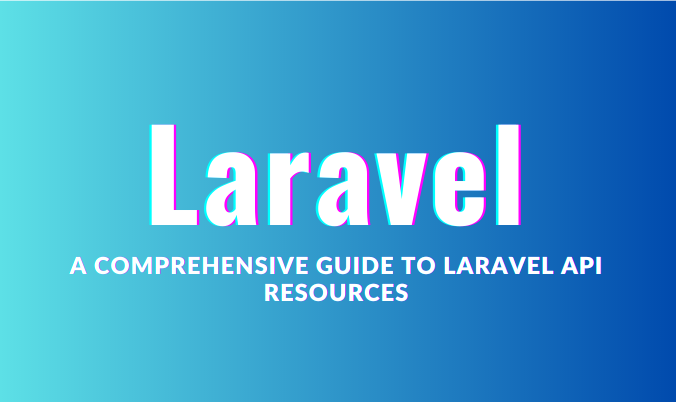Laravel Resources: Transforming Eloquent Models for APIs
Introduction to Laravel Resources
Laravel resources provide a way to transform your Eloquent models and collections into JSON responses for your APIs. They act as a transformation layer, allowing you to control the format and structure of your API responses, ensuring consistency and flexibility.
Why Use Laravel Resources?
- Consistency: Ensure consistent formatting across all API responses.
- Data Control: Select and format only the data you want to expose.
- Data Transformation: Modify data before returning it, like formatting dates or adding calculated attributes.
- Conditional Relationships: Include relationships only when needed, optimizing performance.
- Pagination: Simplify the pagination of API responses.
Creating Resources
You can create a new resource using the make:resource Artisan command:
php artisan make:resource UserResource
This command generates a new resource file in the app/Http/Resources directory.
Resource Structure
A resource class extends Illuminate\Http\Resources\Json\JsonResource and includes a toArray method that defines the format of the returned data.
Example: UserResource
<?php
namespace App\Http\Resources;
use Illuminate\Http\Request;
use Illuminate\Http\Resources\Json\JsonResource;
class UserResource extends JsonResource
{
public function toArray(Request $request): array
{
return [
'id' => $this->id,
'name' => $this->name,
'email' => $this->email,
'created_at' => $this->created_at->format('Y-m-d H:i:s'),
];
}
}
This example transforms a User model into a JSON object with specific attributes and formatted created_at.
Using Resources in Routes
To use a resource, return an instance of it in your route:
use App\Http\Resources\UserResource;
use App\Models\User;
Route::get('/users/{user}', function (User $user) {
return new UserResource($user);
});
Resource Collections
For collections of models, use resource collections:
use App\Http\Resources\UserResource;
use App\Models\User;
Route::get('/users', function () {
return UserResource::collection(User::all());
});
Including Relationships
Use $this->whenLoaded to include relationships conditionally:
public function toArray(Request $request): array
{
return [
'id' => $this->id,
'name' => $this->name,
'email' => $this->email,
'posts' => PostResource::collection($this->whenLoaded('posts')),
];
}
Conditional Resources
Use $this->mergeWhen and $this->when for conditional attributes:
public function toArray(Request $request): array
{
return [
'id' => $this->id,
'name' => $this->name,
$this->mergeWhen($request->user() && $request->user()->id === $this->id, [
'email' => $this->email,
]),
'is_admin' => $this->when($request->user() && $request->user()->is_admin, true, false),
];
}
Pagination
Laravel resources simplify pagination:
use App\Http\Resources\UserResource;
use App\Models\User;
Route::get('/users', function () {
return UserResource::collection(User::paginate(10));
});
Resource Wrapping
You can customize the wrapping of resource data using the wrap method:
UserResource::wrap('user');
This wraps the data in a 'user' key.
Additional Tips
- Use descriptive resource names.
- Test your API responses thoroughly.
- Leverage conditional resources for efficient data delivery.
Further Reading
For more details, refer to the official Laravel documentation.



Post a Comment
0Comments